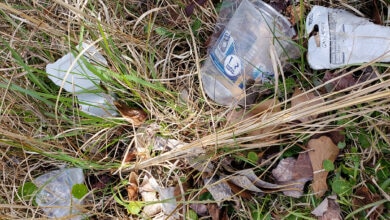Mercury from artisanal gold mining poses silent threat to Peruvian Amazon

By Carla Samon Ros
Lima, May 4 (EFE).- The lush rainforest of the southeastern Peruvian Amazon appears pristine at first glance, but toxic mercury concentrations from artisanal and small-scale gold mining in that region are believed to be higher than in any other forested area on Earth, according to a study published in the scientific journal Nature Communications.
The study, published on Jan. 28, was conducted in the Peruvian jungle-covered department of Madre de Dios, where over 100,000 hectares (386 square miles) have been deforested for alluvial gold mining, both adjacent to and within protected land and national reserves.
“The high levels of mercury that we found were completely unexpected. And in fact I kept trying to search the Internet and read papers trying to find somebody who had found a higher concentration,” American biogeochemist Jacqueline Gerson, the lead author of the study, told Efe. “Because I just couldn’t believe that we would see levels of mercury input in these systems that were so much higher than anywhere else.”
As part of the study, air, vegetation and soil samples were gathered at three sites near the gold mining activity, as well as at two sites located between 50 kilometers (31 miles) and 100 km from the mining operations.
The researchers discovered that the primary forest areas adjacent to the mining activity had between two and 14 times more gaseous elemental mercury (GEM) concentrations than what was detected at the remote sites.
Indeed, the mercury loading at one of the mining-adjacent sites – located within the intact old-growth forest of the Los Amigos Conservation Concession, which covers an area of 146,000 hectares – exceeded previously reported mercury concentrations from forests of North America and Europe near mercury point sources and was on a par with values in industrial China.
By contrast, deforested areas of the mining zone had lower levels of mercury loading, a finding that, according to the study, suggests that “the very forest complexity that is the basis for Amazonian biodiversity makes this region highly vulnerable to enhanced mercury loading and storage.”
Artisanal and small-scale gold mining is harmful to the environment in several ways. The miners clear-cut rainforest, dredge the soil and use mercury to separate the gold from other minerals.
That later technique creates a gold-mercury amalgam that is later burned, releasing gaseous mercury particles that adhere to leaves and are later washed into the soil by rainfall, Gerson said.
But the story does not end there. The study found that average mercury concentrations in the tail feathers of several species of resident songbirds in a mining-impacted area were between two and three times higher than those from birds at a site removed from the mining activity.
This provides strong evidence that mercury deposited into these forested areas is entering terrestrial food webs.
“Elevated mercury exposure in songbirds leads to reduced reproductive performance and success, decreased offspring survival, impaired development, altered behavior, physiological stress and mortality,” the study says.
It goes on to say that the continued use of mercury in artisanal and small-scale gold mining could have devastating impacts on wildlife inhabiting those forests.
“Even if miners eliminated the use of mercury immediately, this contaminant has a legacy in soils that can extend for centuries.”
According to Gerson, the solution lies in formalizing mining operations to ensure they are located in areas that are less environmentally vulnerable and in making technology improvements to reduce mercury emissions into the atmosphere.
She also stressed the importance of promoting socioeconomic development in the Madre de Dios department.
EFE
csr/mc





